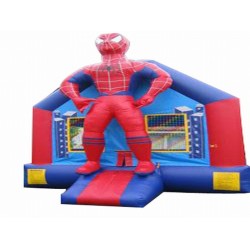Can You Set Up a Bounce House Without Anchors?

Anchors are crucial for ensuring the safety and stability of a bounce house. They keep the inflatable grounded, preventing it from shifting or blowing away during use. While it may be tempting to set up a bounce house without using anchors, doing so can pose serious safety risks. Let’s explore whether you can set up a bounce house without anchors and why they are important.
1. Importance of Anchors
Anchors play a vital role in stabilizing the bounce house, especially outdoors:
- Prevent Movement: Without anchors, the bounce house can shift, tip, or slide, especially when multiple children are jumping inside.
- Wind Protection: In windy conditions, an unanchored bounce house can become airborne, posing a significant danger to users and bystanders.
2. Types of Anchors
There are different types of anchors that can be used depending on the surface where the bounce house is set up:
- Ground Stakes: Typically used on grassy surfaces, stakes are driven into the ground to secure the bounce house in place.
- Sandbags or Weights: If setting up on concrete, asphalt, or indoors, sandbags or heavy weights can be used to anchor the inflatable.
3. Risks of Setting Up Without Anchors
Setting up a bounce house without anchors is not recommended and poses several risks:
- Instability: Without anchoring, the bounce house can become unstable, increasing the risk of tipping or collapsing while children are playing.
- Wind Hazards: Even in light wind conditions, an unanchored bounce house can be lifted off the ground or blown over, leading to potential injuries.
- Accidents: If the bounce house shifts or tips, it can cause children to fall or collide with each other, resulting in injury.
4. Safe Alternatives to Anchors
If you do not have access to traditional ground anchors, there are other safe alternatives to consider:
- Weighted Bags: Sandbags or water-filled bags can be placed at each anchor point to stabilize the bounce house on hard surfaces.
- Indoor Setup: For indoor setups, ensure that the bounce house is placed on a non-slip surface and secured with weights.
- Wall Proximity: If indoors, placing the bounce house against a wall can provide additional stability, but should still be combined with weights.
5. Best Practices for Using Anchors
When using anchors, follow these best practices to ensure a safe setup:
- Check for Stability: Before allowing children to enter the bounce house, ensure that it is securely anchored and stable.
- Use Proper Anchors for the Surface: Choose the appropriate anchors (stakes or weights) based on the surface where the bounce house is placed.
- Inspect Regularly: Periodically check the anchors throughout the event to ensure they remain secure and the bounce house does not shift.
Conclusion
Setting up a bounce house without anchors is highly discouraged due to the safety risks involved. Anchors help keep the bounce house stable and secure, preventing accidents and injuries. Whether using stakes on grass or weights on hard surfaces, always ensure the bounce house is properly anchored for a safe and enjoyable experience.




Leave a Comment